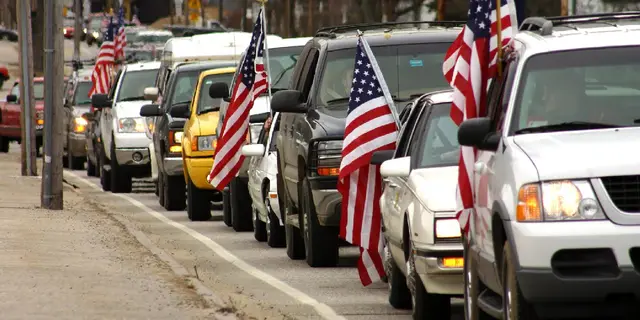If you’re planning to take a trip for the Fourth of July weekend, get ready for busy airports and roads.
AAA projects 50.7 million Americans will travel 50 miles – or farther – from home over the holiday weekend, marking a record high for the holiday, the membership organization said Monday. The previous record was 49 million travelers in 2019.
Domestic travel will go up by 2.1 million people as compared with 2022, according to AAA.
“We’ve never projected travel numbers this high for Independence Day weekend,” Senior Vice President of AAA Travel Paula Twidale said in a news release. “What this tells us is that despite inventory being limited and some prices 50% higher, consumers are not cutting back on travel this summer. Many of them heeded our advice and booked early, another sign of strong travel demand.”
AAA’s forecast defines the holiday travel period as June 30 to July 4.
What can travelers expect during July 4 weekend?
Fourth of July weekend is expected to see record numbers of both road trippers and air travelers. AAA projects that 43.2 million people will drive, up more than 2% from 2022, when gas prices were higher. That number is also 4% higher than 2019.
The organization expects 4.17 million U.S. travelers to fly, up more than 11% from 2022 and higher than the previous record of 3.91 million in 2019. “The share of air travelers in the overall holiday forecast this year is an impressive 8.2% – the highest percentage in nearly 20 years,” AAA said in the release.
Some will take other kinds of trips. A predicted 3.36 million people will travel by bus, train or cruise during the holiday weekend, AAA said. That number is 24% higher than in 2022.
What are the best times to drive on July 4 weekend?
INRIX, which works with AAA on holiday travel projections, said roads are likely to be busiest on Friday, June 30, with average travel times almost 30% higher than usual. The transportation data and insights provider predicts drivers in major metropolitan areas like Washington, D.C., Boston and Seattle will face the worst traffic.
“With record-breaking travelers expected on the road this holiday weekend, drivers should prepare for above-average delays to their favorite destinations,” Bob Pishue, transportation analyst at INRIX, said in the release.
Sunday, July 2, and Monday, July 3, are expected to see minimal traffic impacts, however.
➤ These are the best times to drive on the other days:
- Thursday, June 29: Before noon.
- Friday, June 30: Before 10 a.m. or after 6 p.m.
- Saturday, July 1: Before noon.
- Tuesday, July 4: Before 11 a.m. or after 6 p.m.
- Wednesday, July 5: Before 2 p.m.
➤ These are the worst times to drive:
- Thursday, June 29: Between 4 and 6 p.m.
- Friday, June 30: Between 10 a.m. and 5 p.m.
- Saturday, July 1: 1 p.m.
- Tuesday, July 4: Between noon and 3 p.m.
- Wednesday, July 5: Between 3 and 6 p.m.
“Using traffic apps, local DOT notifications, and 511 services are key to minimizing holiday travel traffic frustrations this Independence Day,” Pishue said.

